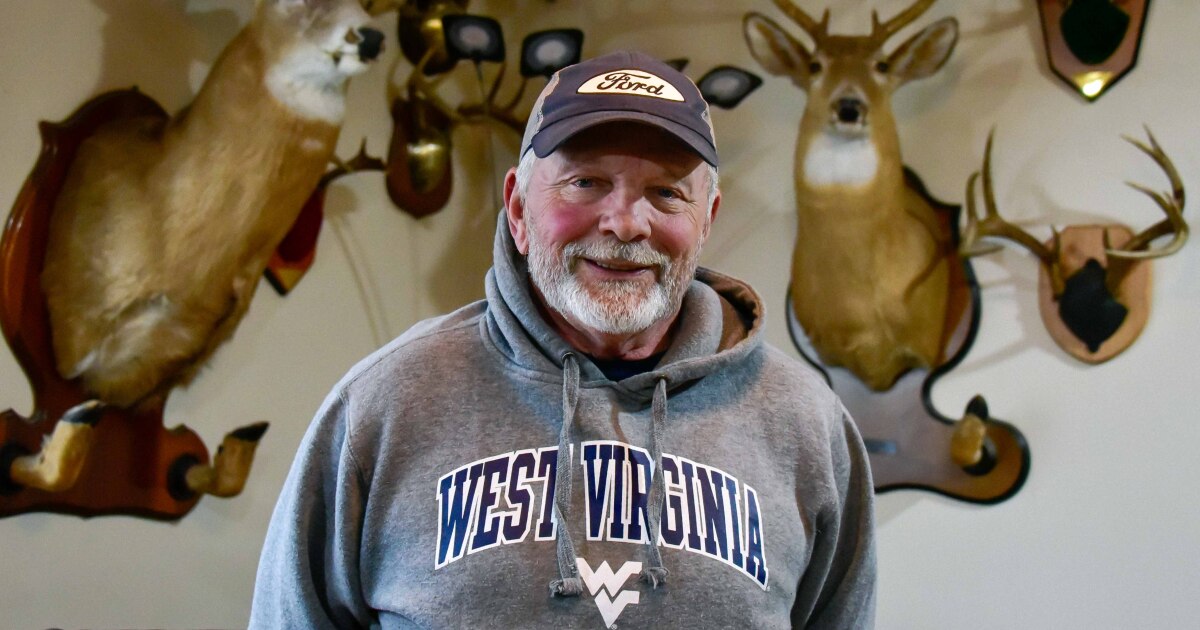Upper Big Branch Mine Disaster: Survivor’s Account adn Looming Safety Concerns
A decade and a half after the tragic Upper Big Branch mine explosion, survivor Stanley “Goose” Stewart speaks out about the disaster, the consequences, and the potential dangers of weakened mine safety regulations.
A Day of Horror: Remembering April 5, 2010
on April 5, 2010, Easter Monday, the Upper Big Branch mine in Montcoal, West Virginia, exploded, claiming the lives of 29 miners. Stanley “Goose” Stewart, a veteran coal miner, was there. His firsthand account paints a chilling picture of the disaster and its immediate aftermath.
Stewart recounts the moment he realized something was terribly wrong: “It was Monday, April, 5, the day after Easter.I was headed underground. I felt the air flowing from inside the mine coming out and I realized , ‘Uh oh, it ain’t far to the outside, but you gotta get there.'”
Emerging from the mine, he witnessed a scene of unimaginable devastation.”So I got outside and turned off to the right and looked, and you could see the air and debris gushing out of the mines. And I knew immediately that it had blown up.” The frantic calls on the mine phone underscored the chaos and desperation: “You could hear the mine phone over and over hollering “Hello longwall? Hello longwall?” trying to get someone to answer.”
The scene that followed was even more harrowing. Stewart, trained in CPR, attempted to revive his fallen colleagues. “Yes, I did CPR on two or three of them. They smelled like dynamite and their faces were black — nostrils, mouth just filled with black soot. You’re working on them, and you know that they’re gone, but you hope maybe…” The bodies were laid out in the parking lot, a grim testament to the lives lost. “we started lying them on the parking lot in single file. we had blankets down the lame on rather than the gravels…and so then I went over and sat down and just. I looked around, and actually I started crying. That was a bad day.”
Speaking Truth to Power: Accountability After the Disaster
Stewart retired after the Upper Big Branch disaster, but his involvement didn’t end there.He channeled his grief and anger into a relentless pursuit of justice, speaking out against Massey Energy, the company that owned the mine. He testified in court and before Congress, alleging that the company prioritized profits over safety, leading to the tragedy.
His testimony and the subsequent investigation revealed a pattern of safety violations and negligence. Massey Energy was found to have consistently cut corners on safety measures, ignoring warnings and putting miners at risk. The most critically important outcome of this investigation was the conviction of Don Blankenship, the CEO of Massey Energy, who served a year in prison for conspiracy to violate mine safety laws.
Stewart recalls the support he received from his community: ” People actually, you know, they were proud of me. They pat me on the back and say ‘Hey Goose, you go on, you go on telling your story and —'” But he also acknowledges the fear that kept others silent.”Simple fact, they knew that they would be fired or not have a job. The upper management at Massey, they operated under fear intimidation and propaganda. Don blankenship, he’d offer trips, bonuses, gifts.I’d tell them boys, now listen fellas, no amount of money is worth your rights, especially in a coal mine.”
The Threat of Deregulation: A warning for the Future
Stewart expresses deep concern about potential cuts to the Mine Safety and Health Governance (MSHA), the agency responsible for inspecting and enforcing mine safety laws. He believes that weakening MSHA would have dire consequences for miners.
“If they destroy the mine inspecting in these mines, I feel sorry for the miners,” Stewart warns. “These guys, it’s going to be tough, it’s going to be real tough. If they hit the coal industry where it can’t be policed, I’ll tell you right now: I wouldn’t want to be in a coal mine.” His words serve as a stark reminder of the importance of strong regulatory oversight in protecting workers’ lives.
The Broader Context: Mine Safety in the United States
The Upper Big Branch disaster wasn’t an isolated incident. Historically, mining has been one of the most dangerous occupations in the United States. While significant progress has been made in improving mine safety over the past century, vigilance and strong enforcement are crucial to prevent future tragedies. Events like the Sago Mine disaster in 2006 and the Darby Mine No. 1 explosion in 2006 highlight the ever-present dangers and the need for continuous improvement in safety protocols.
The United Mine Workers of America (UMWA), a labor union representing coal miners, has long advocated for stricter safety regulations and better working conditions. Their efforts have played a significant role in advancing mine safety in the U.S.
| Key Mine Disasters in U.S. History | Date | Location | Fatalities |
|---|---|---|---|
| Monongah Mining Disaster | December 6, 1907 | Monongah, West Virginia | 362 |
| Darr Mine Disaster | December 19, 1907 | Jacobs Creek, Pennsylvania | 239 |
| Fraterville Mine Disaster | May 19, 1902 | Fraterville, Tennessee | 216 |
| Upper Big Branch mine Disaster | April 5, 2010 | Montcoal, West Virginia | 29 |
Moving Forward: Lessons Learned and the Path to Safer Mines
The legacy of the Upper Big Branch disaster extends beyond the immediate tragedy. It serves as a constant reminder of the human cost of neglecting safety and the importance of holding companies accountable for their actions.To ensure safer mines in the future, several key areas require attention:
- Strengthening MSHA: Adequate funding and staffing are essential for MSHA to effectively inspect mines and enforce safety regulations.
- Promoting a Culture of Safety: Mining companies must prioritize safety over profits and create a work surroundings where miners feel empowered to report safety concerns without fear of retaliation.
- Investing in technology: Advancements in mining technology can help to improve safety by providing better monitoring systems, early warning systems, and safer equipment.
- Continuous Training: Miners need ongoing training to stay up-to-date on the latest safety procedures and best practices.
The voices of survivors like Stanley “Goose” Stewart are crucial in advocating for these changes and ensuring that the lessons of Upper Big Branch are never forgotten.
What do you believe is the single most crucial step to improve mine safety in the United States?
Interview with Stanley “Goose” stewart: Remembering Upper Big Branch and the Fight for Mine Safety
Archyde News Editor: Good day, Goose. Thank you for joining us today. It’s been fifteen years since the Upper Big Branch Mine Disaster. Can you describe what you remember from that day, April 5, 2010?
Stanley “Goose” Stewart: Glad to be here.That day…well, it’s etched in my memory.I was headed underground, and I felt the air change, the air flowing out. That’s when I knew something was terribly wrong. Getting out of that mine and seeing the devastation… the air and debris gushing out,and the frantic calls on the mine phone. It was pure chaos.
Archyde News Editor: That sounds horrific. You’ve spoken about the aftermath, the bodies, and the CPR you performed. Can you take us through that?
Stanley “Goose” Stewart: Absolutely. I tried to help where I could. I did CPR on a couple of the men. They were covered in soot, and you knew…you just knew. We laid them out in the parking lot. It was a day I’ll never forget.I started crying.
Archyde News editor: You retired after the disaster, but yoru involvement didn’t end there. You became an advocate for accountability. What motivated you to speak out against Massey Energy?
Stanley “Goose” Stewart: I lost good friends that day. I was angry but also driven to seek justice. I testified in court, before Congress, trying to get everyone to be held accountable. It was clear Massey put profits before safety.They knew it, we knew it, and the evidence proved it.
Archyde News Editor: The conviction of Don Blankenship, the CEO, was a meaningful moment. Did the community support you, even amidst the fear you described?
Stanley “Goose” Stewart: There was a lot of support. folks would pat me on the back and say, “Goose, keep telling your story.” But,there was fear,too. People knew they could be fired, and upper management used fear and intimidation. Blankenship would offer perks but I always said, “No amount of money is worth your rights in a coal mine.”
Archyde News Editor: Now, looking ahead, what concerns you most about the current state of mine safety, especially with potential regulatory changes?
Stanley “Goose” Stewart: The threat of weakening MSHA really worries me. If they start cutting back on mine inspections, if these mines aren’t policed, I feel really bad for the miners that will follow. It’s going to be tough out there. And I sure as hell wouldn’t want to be in a coal mine.
Archyde News Editor: Looking at the history of the U.S. mining industry, the Upper Big Branch disaster, sadly, wasn’t a singular event. What needs to be done to prevent similar tragedies?
Stanley “Goose” Stewart: We need to strengthen MSHA, give them the resources to do their job. Mining companies need to prioritize safety.They need to encourage a culture of reporting problems, and invest in technology that can make these mines safer. we also need ongoing training for the miners.
Archyde News Editor: Thank you, Goose, for your time and your unwavering commitment to this critical issue. Your insights are invaluable.
Stanley “Goose” Stewart: Thank you for having me.
Archyde News Editor: Our readers can leave their comments and questions in the section below. What do you believe is the single most crucial step to improve mine safety in the United States?







